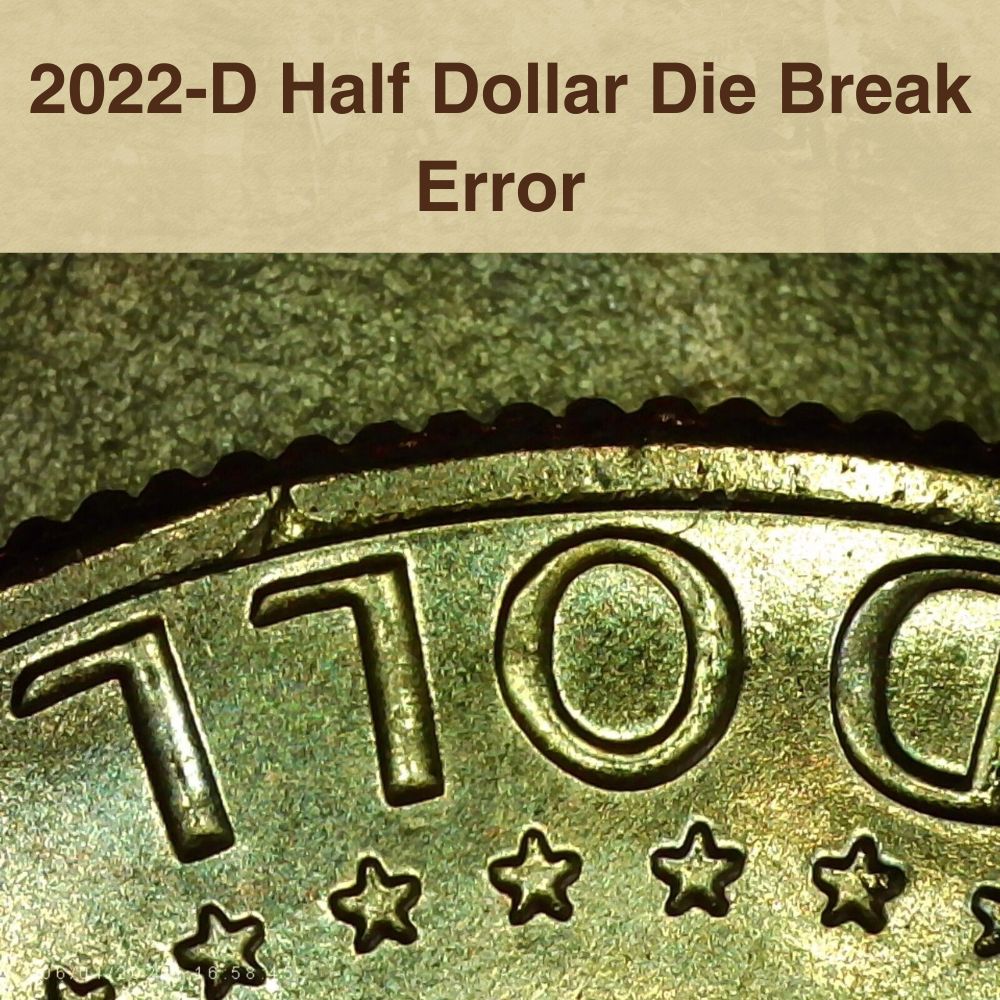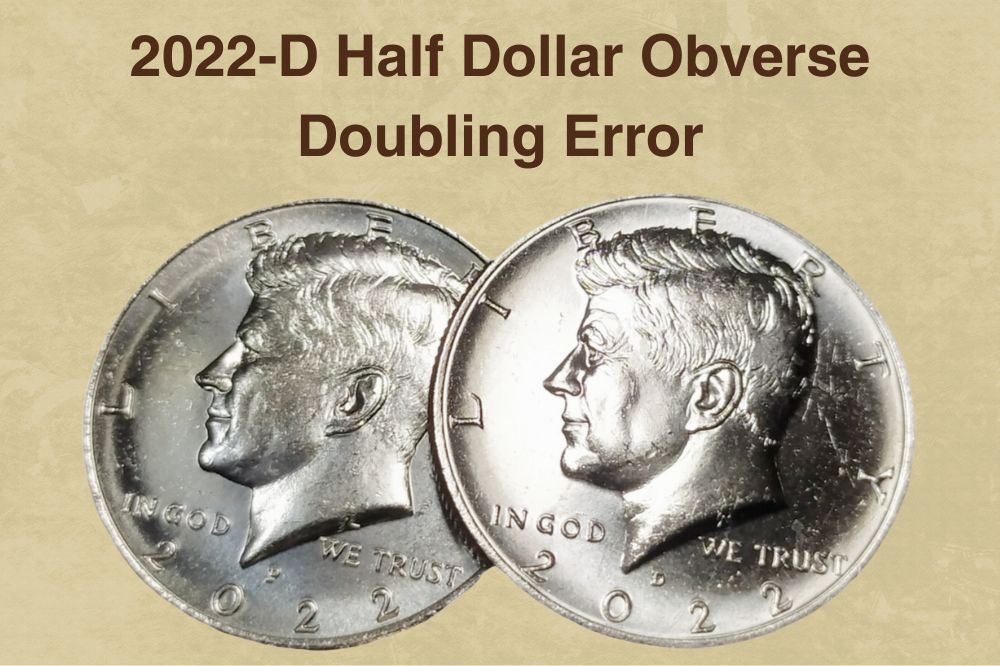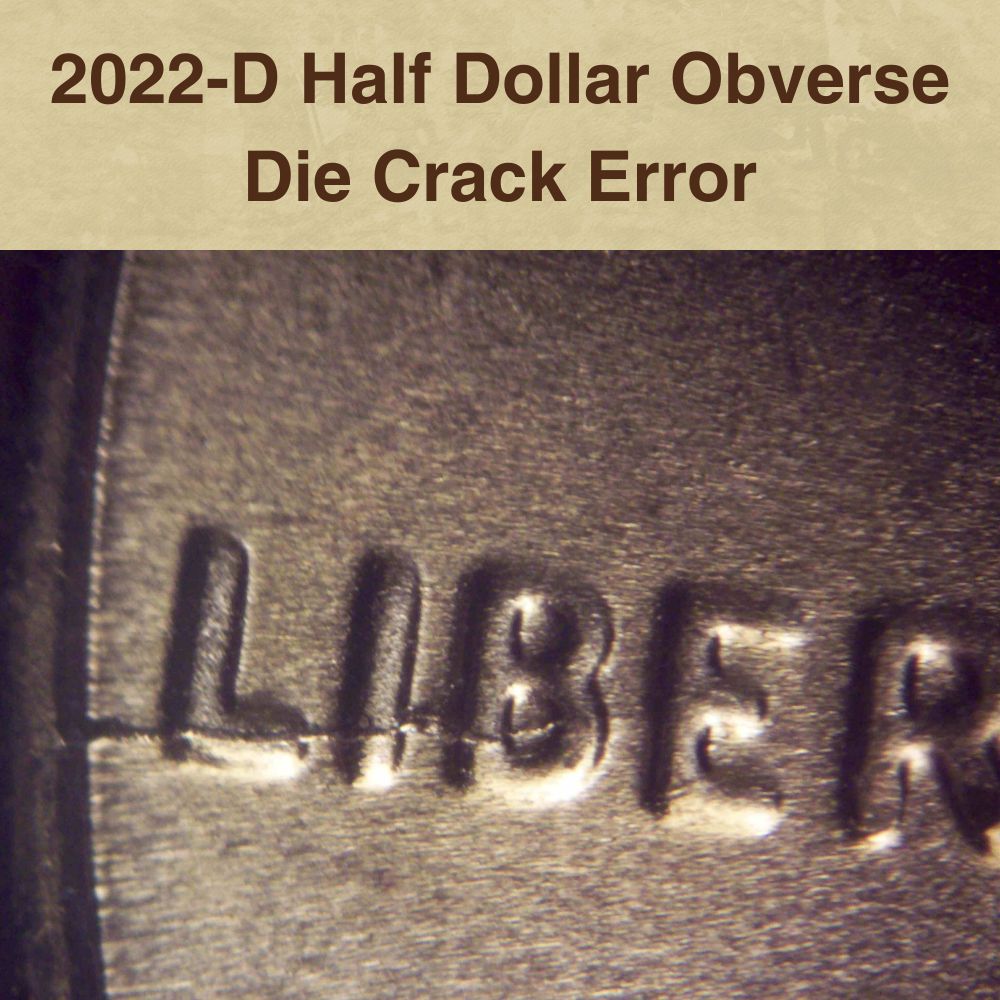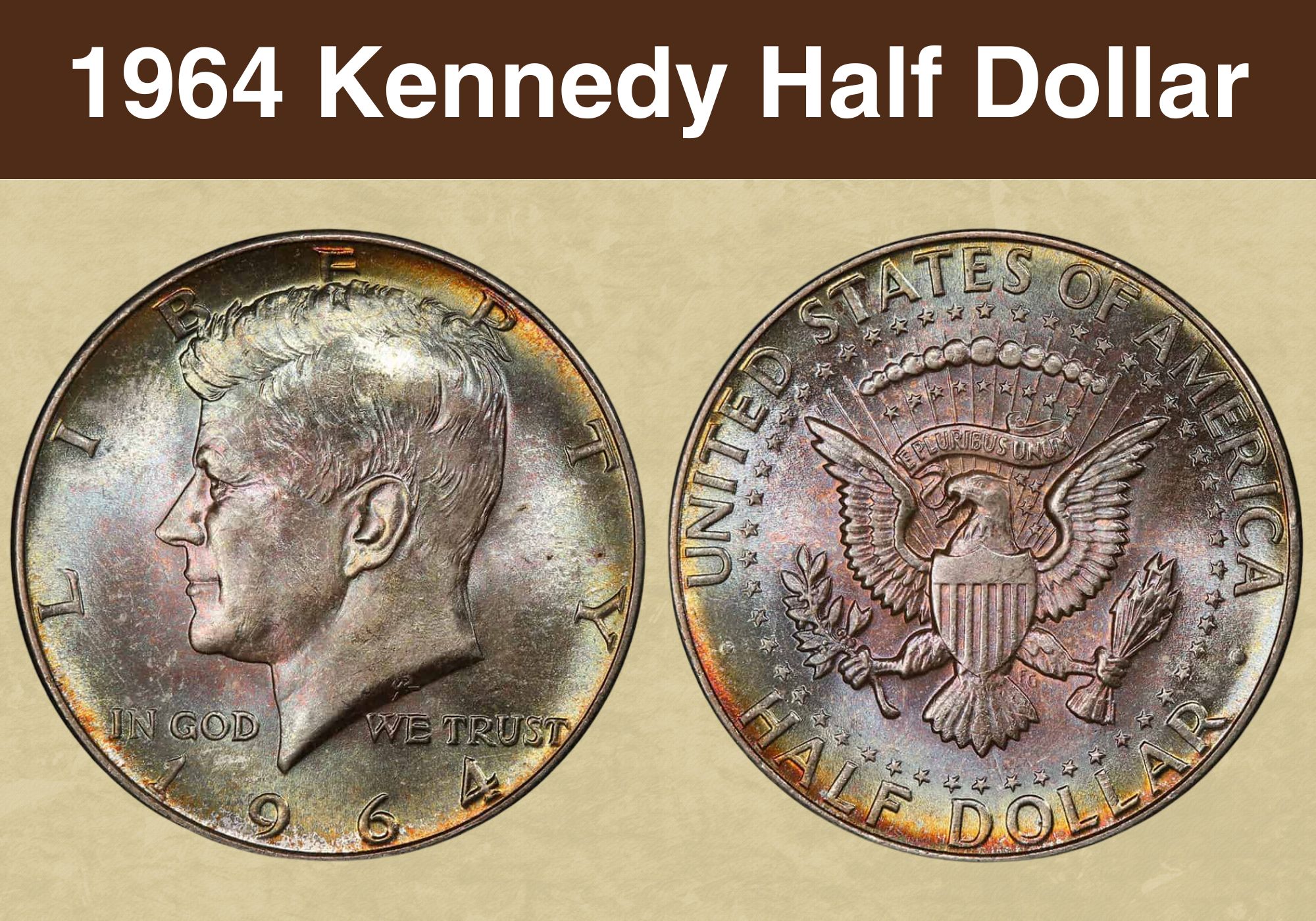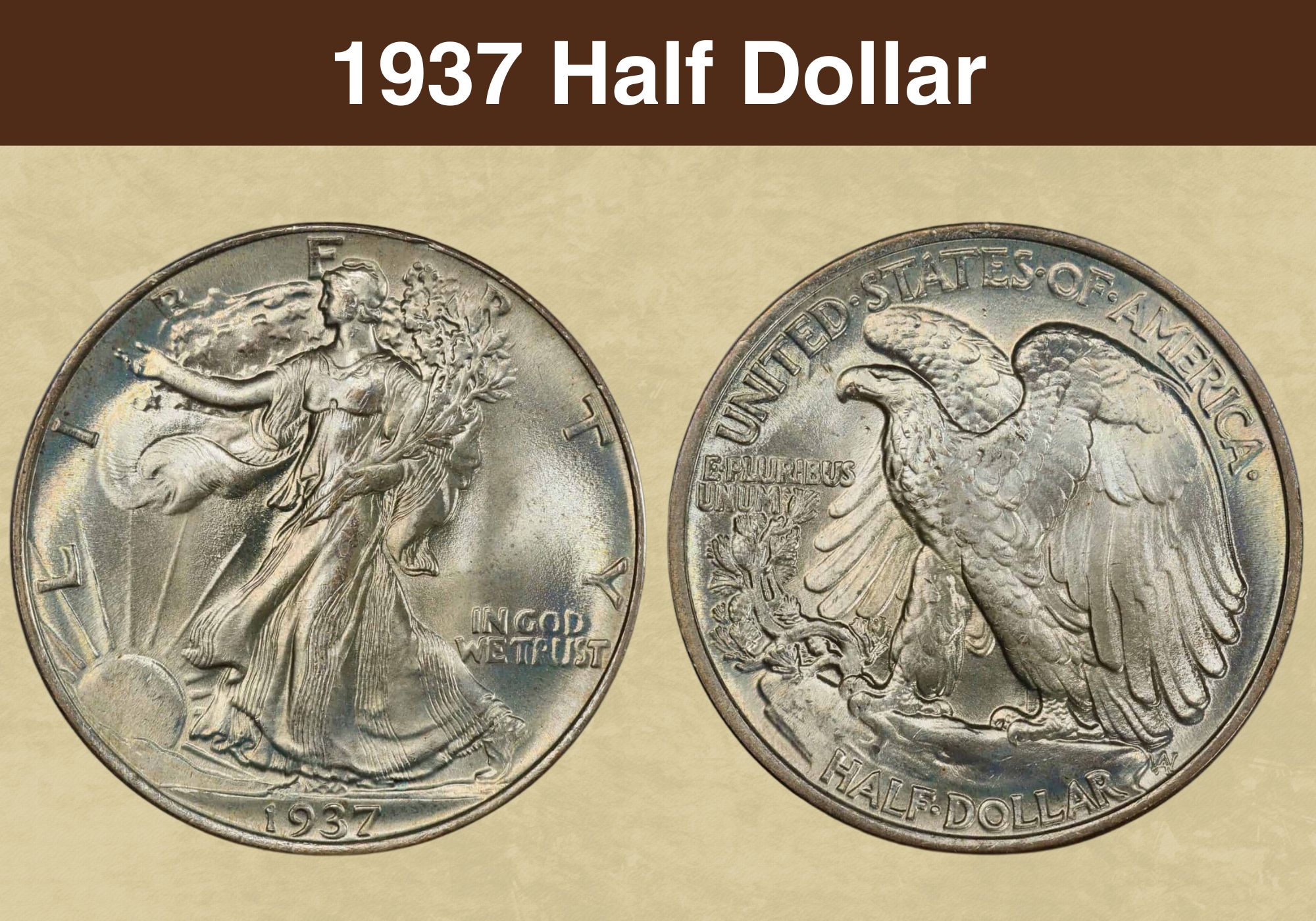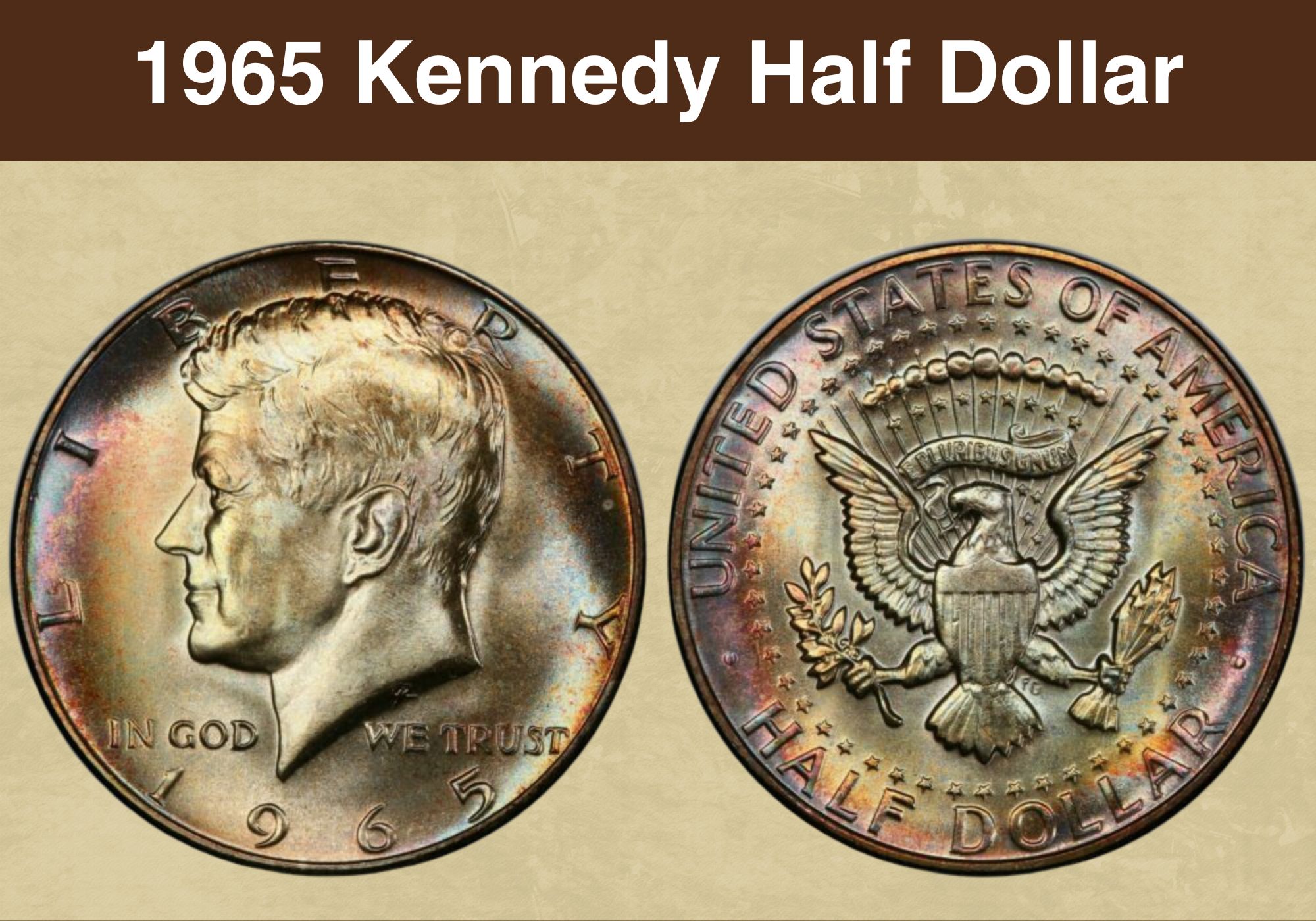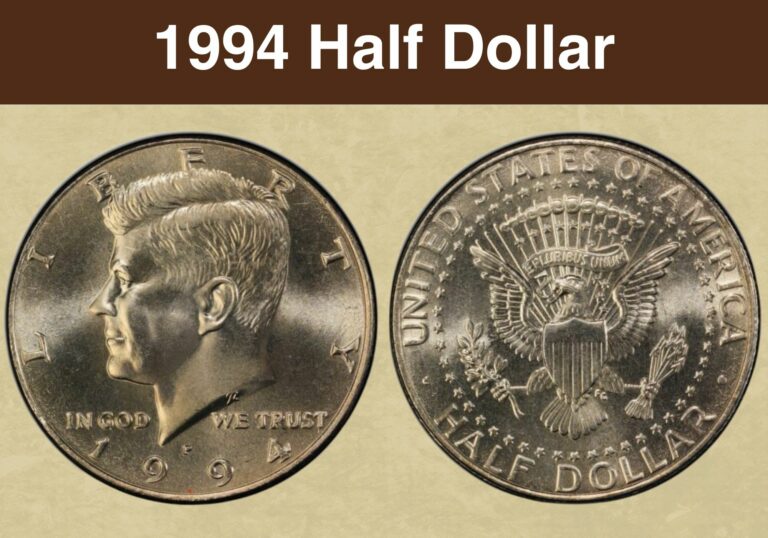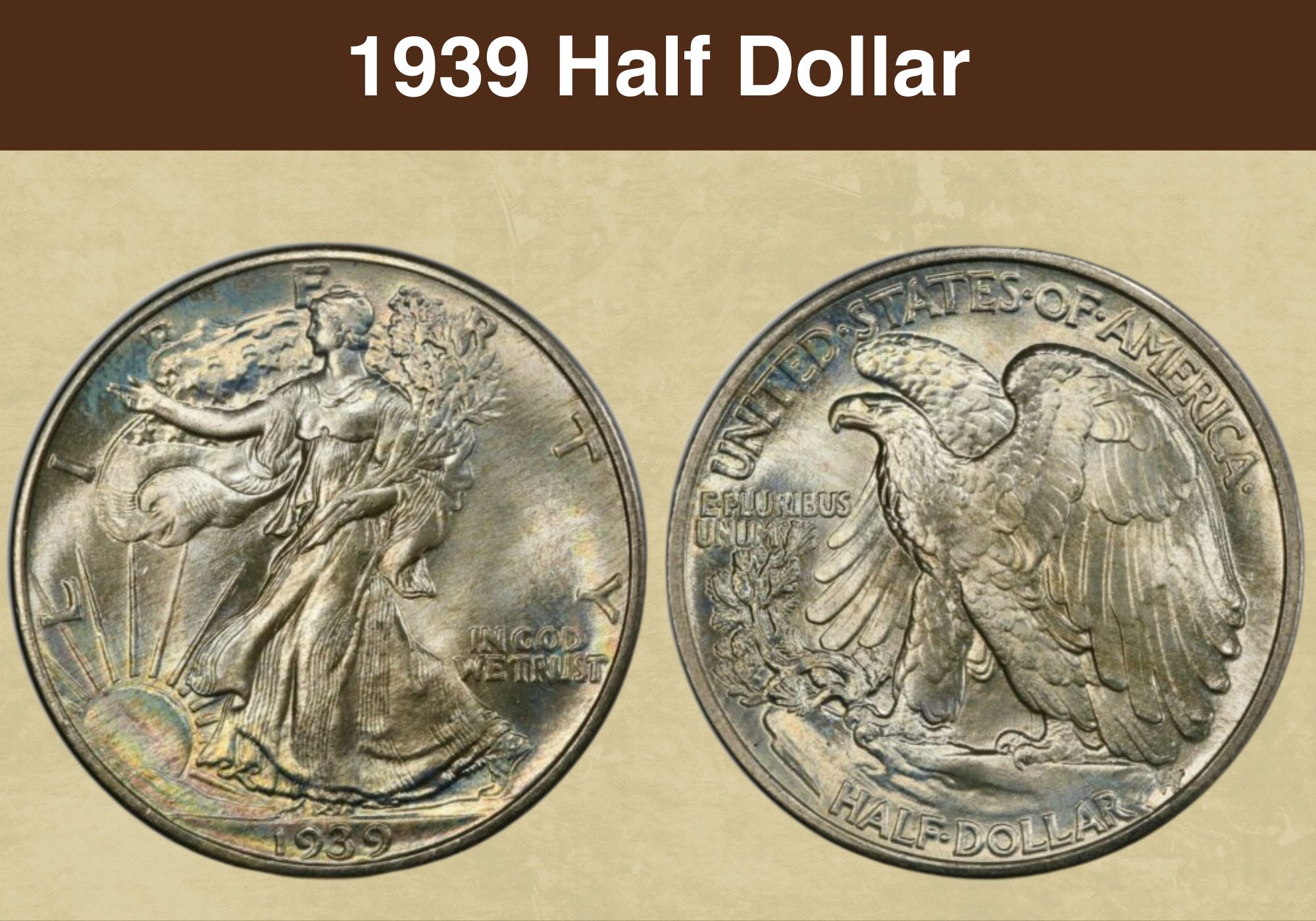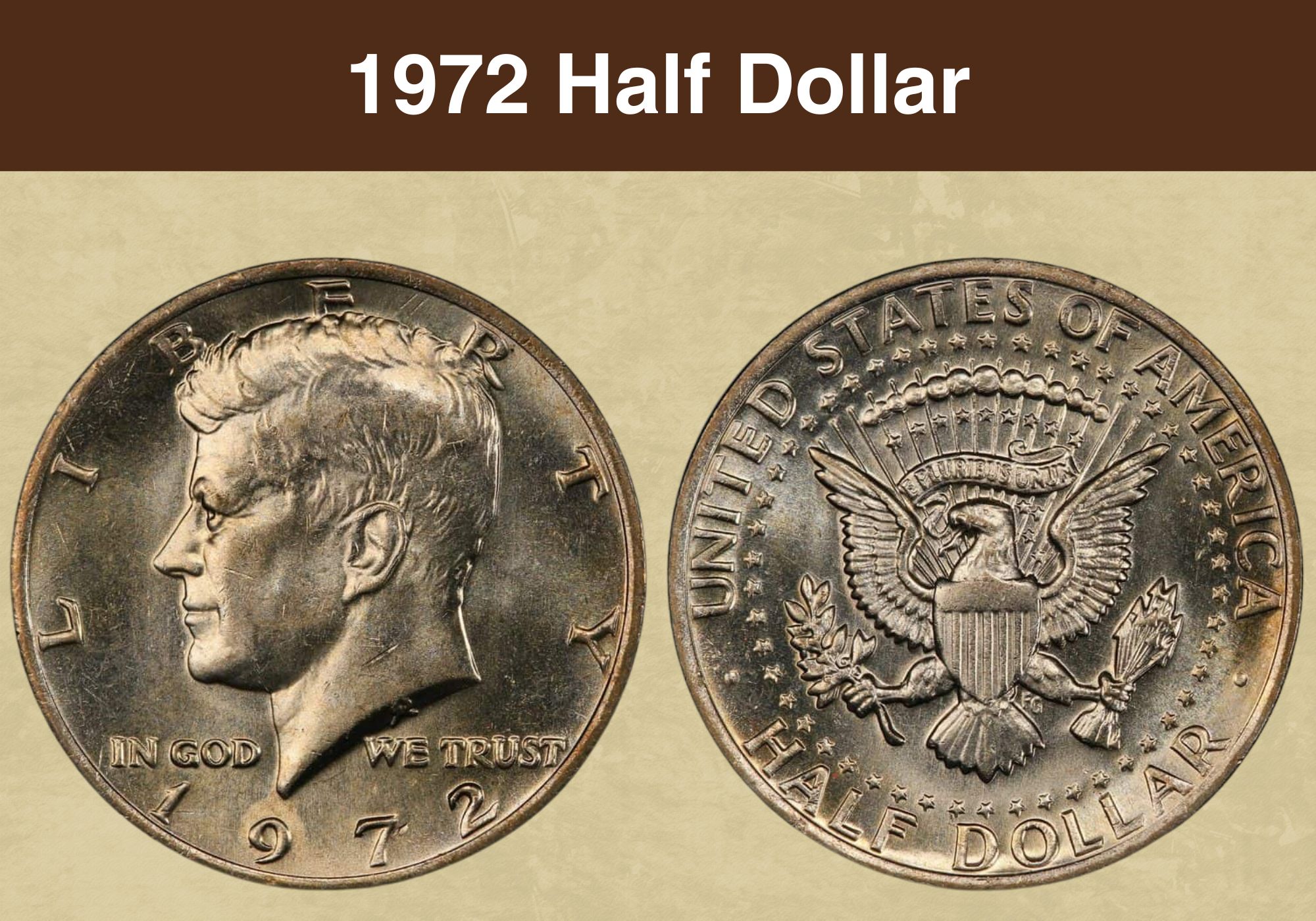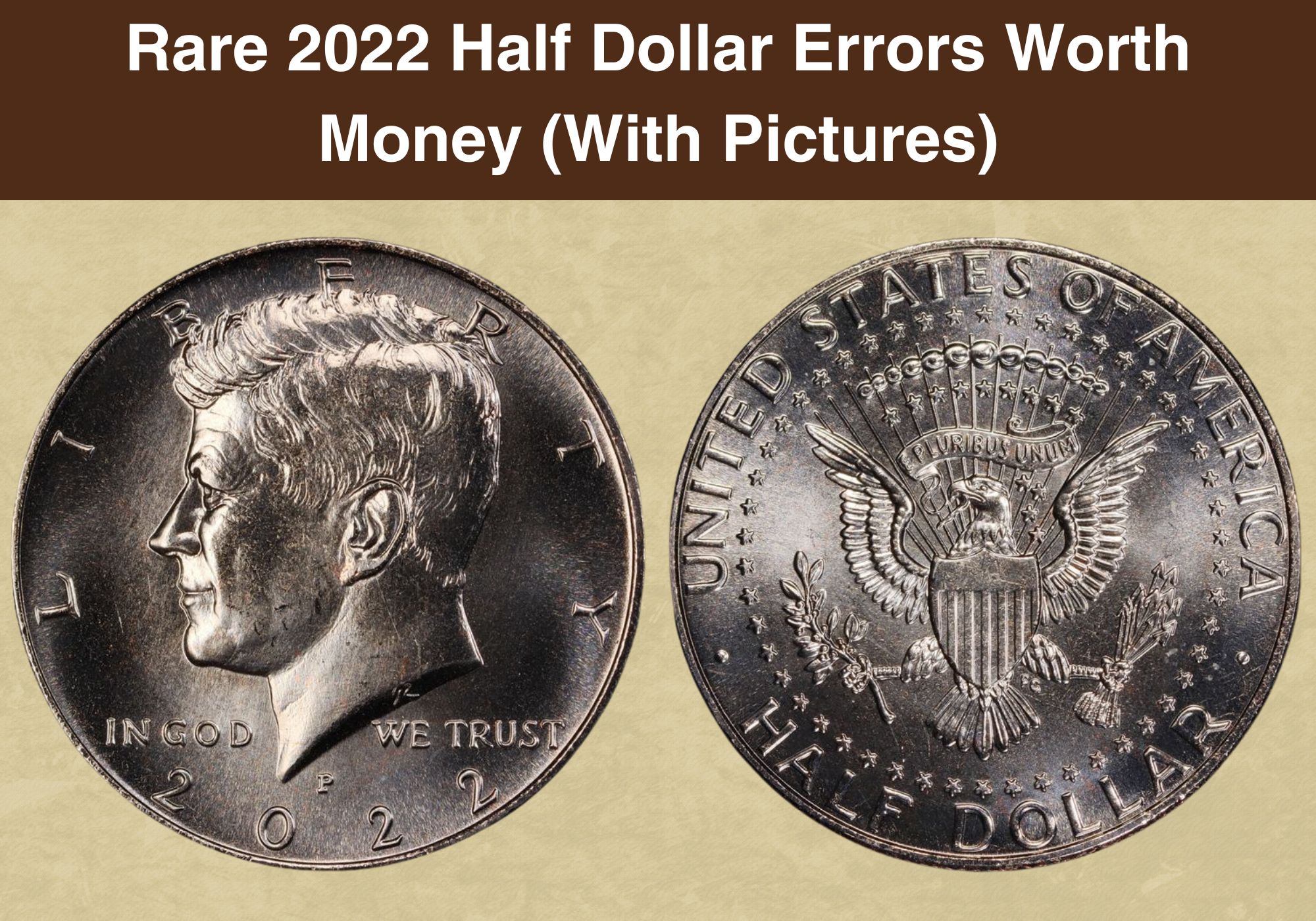
Coin Value Contents Table
- 1. 2022-D Half Dollar Die Break Error
- 2. 2022-D/S Half Dollar OMM Error
- 3. 2022-D Half Dollar Obverse Doubling Error
- 4. 2022-D Half Dollar Obverse Die Crack Error
- 5. 2022-P Half Dollar Retained Error Cud Break
- 6. 2022-D Half Dollar Multiple Strike Thrus
- 7. 2022-P Half Dollar Obverse Struck Thru
- 8. 2022 Half Dollar Collar Errors
- 9. 2022-D Half Dollar Die Clash and DDO
- 10. 2022-S Half Dollar Potential Planchet Error
- 11. 2022 Collectible Half Dollar Errors
Every year, the US Mint strikes coins for collectors (e.g. proofs, reverse-proofs, uncirculated coins, etc.) as well as circulating currency aka business strikes or regular strikes. The latter are made for use in everyday transactions. But if a coin has a mint mistake, its value can go much higher in the secondary market. Let’s review this 2022 Half Dollar Errors list for clues.
1. 2022-D Half Dollar Die Break Error
On 31st August 2022, the US Mint stopped making Kennedy Half Dollars for circulation. This was because these JFK coins aren’t commonly used for everyday transactions, so the Denver and Philadelphia Mints shifted their focus to dimes, nickels, and quarters. They continued to produce collector’s coins though. While no official errors exist, a few have shown up online.
This first error is unverified, but it shows a potential die break. When dies get older, they can chip or crack. This allows excess metal to flow into or out of the coin, creating dents, gashes, and chips called cuds. On this Denver Half Dollar, the crack is in the lower rim, under the first L in Dollar. It forms a V-shaped notch and an eBay vendor is asking $1,000 for the flaw.
2. 2022-D/S Half Dollar OMM Error
On older coins, the Philadelphia Mint would often make the dies then send them to the other branches. That’s why the mint mark was the last detail to be added to the die – the die had to reach its designated mint before this mark was manually placed with a hand-held puncheon. But sometimes, excess dies would be sent to a different branch of the mint due to shortages.
This meant a coin struck in Denver might have a San Francisco Mint Mark. In 2022, the San Fransico Mint made Clad Proof JFKs and Silver Proof JFKs. This error coin has an S peeking out under the D, so it was probably sent to Denver from San Francisco and used on a regular strike coin. The description calls it a silver coin, but those were only used for striking proofs.
3. 2022-D Half Dollar Obverse Doubling Error
Older coin systems carved coins by hand. Later, the process was mechanized by producing an 8″ prototype, shrinking it to size in a reducing machine, using the model to strike hubs and dies, then striking blanks with these dies to mint coins. And doubling is an error that can pop up at any of these stages. If the die moves when the hub is striking it, it’s a doubled-die error.
The flaw is then copied to all the coins struck by that die. But if it’s blank (aka the planchet) that shifts between die strikes, that’s called mechanical doubling. You can’t always tell if the doubling is a die error or a planchet error unless it’s verified by a certification company. But in this case, you can see some obverse doubling on the Y and the R from the legend Liberty.
4. 2022-D Half Dollar Obverse Die Crack Error
In the world of collectible items and mementos, you may hear the phrase NRFB uttered in excited squeals or hushed tones. It means Never Removed From Box and it describes a high-end mint-condition item that wasn’t taken out of its original packaging. Numismatists have a similar term – NIFC. It means Never Intended For Circulation and refers to special coin sets.
They might be proofs, reverse-proofs, special strikes, or uncirculated coins that the mint sold directly to collectors. But their families would sometimes slip these coins into circulation by inadvertently using them to pay for stuff. Also, while it’s harder to find errors on new coins, you can get a few dollars from a minor error. One Half Dollar had a crack on the E in Liberty.
5. 2022-P Half Dollar Retained Error Cud Break
We explained cud breaks earlier. It’s when the die gets really old – a die can typically be used to make tens of thousands of coins, sometimes hundreds of thousands. They work as a pair – the obverse die for the heads side and the reverse die for the tails side. But an obverse from one set can be paired with a reverse from another set. That’s why you sometimes get a mule coin.
For reference, a mule is when the obverse of one coin and the reverse from another coin get struck onto the same blank so it’s two different coins in one. But here, we have a basic die break error. On the coin, you can see a distinct crease in JFK’s hair. It looks about ready to flake off so it’s described as a retained cud break since it hasn’t scraped off the coin surface.
6. 2022-D Half Dollar Multiple Strike Thrus
Some errors are quite similar to others. So unless you’re a coin grader or a numismatist (people who study, collect, and trade coins, tokens, paper money, etc.), it can be tough to identify the exact mint mistake. And verifying coins costs money. Sometimes, more money that you can make selling the coin. But you might notice marks that look like rough handling.
These grazes might be from coins jingling in a coin bag or till. But they could also be traces of die aging and die clashes. That’s when the obverse and reverse die bash each other without a blank between, leaving traces of their designs behind. So the next obverse blank might have some accidental details from the reverse die. They can be random lines or identifiable marks.
7. 2022-P Half Dollar Obverse Struck Thru
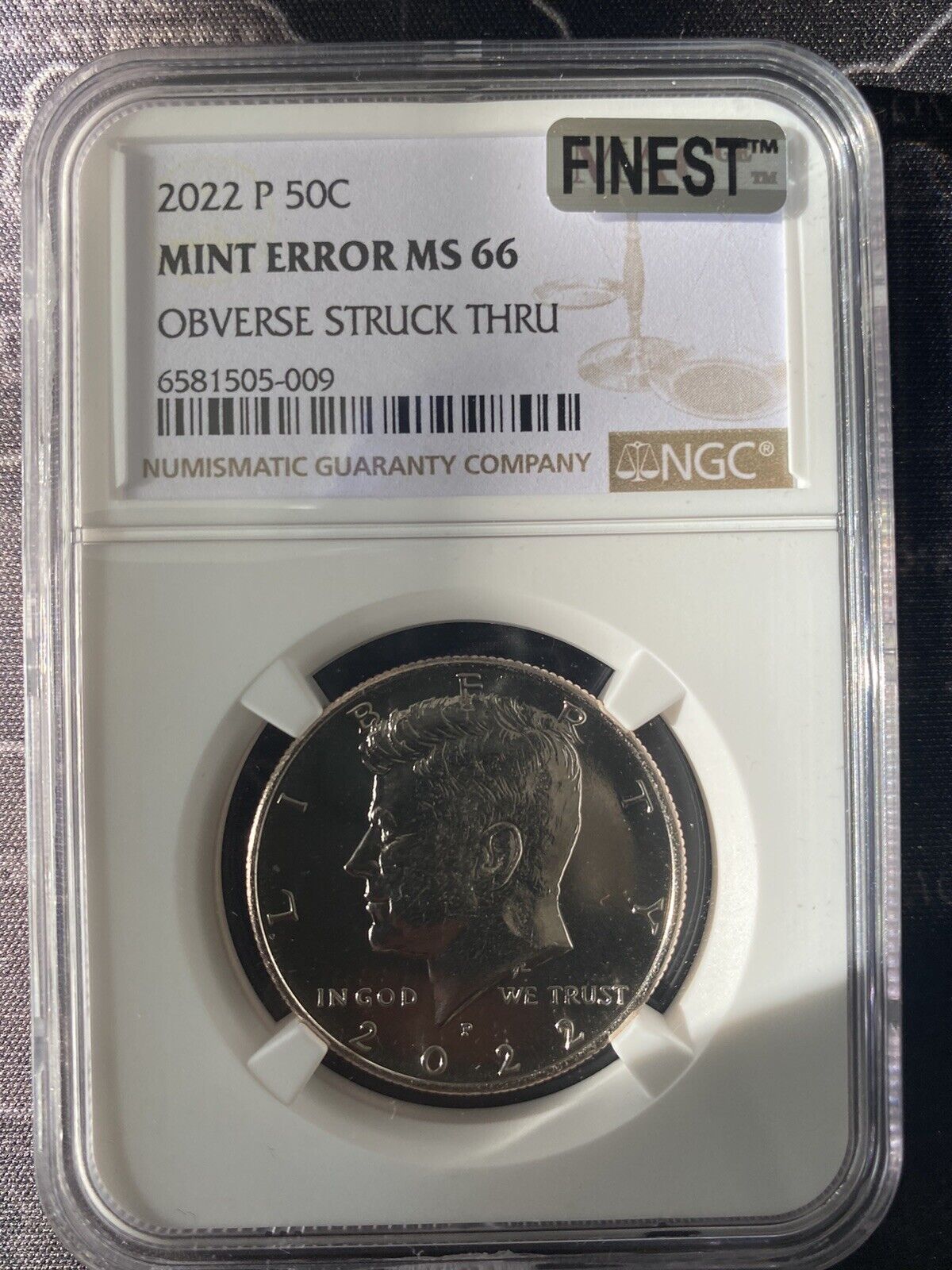
Quality control is quite high at mint facilities. Workers wear protective clothing to avoid injury while preventing damage to coins. But sometimes, a wrench falls into the mix. Not necessarily an actual tool though – it could be a staple, a piece of tape, a metal shard from a punched planchet sheet, or even a fruit stamp, though that was likely a deliberate ‘error’.
This is called a struck thru or strike through error. It’s worth more if you have the remnants of the contaminant. Here, the obverse strike through looks like fabric, so it may have been the sleeve of one of the workers. This struck thru error left a smudge over much of Kennedy’s face. The error was verified by NGC (Numismatic Guaranty Company) and graded as MS 66.
8. 2022 Half Dollar Collar Errors
Since 2022 has no official list of errors – at least not yet – you can go through coin rolls looking for some of the most common categories. Previously, most coins had to be struck two or more times to ensure the designs were effectively transferred. But starting in 2005, the US Mint began experimenting with digital techniques. And as early as 1971, computers came in.
At first, it was just digital lasers for proof coins. But later, the drafting, design, and sculpting process were all done digitally and coins could only be struck once. You no longer find flaws like doubling or RPMs (repunched mint marks) but you may still spot lamination errors on clad coins, die breaks for coins from late-stage dies, wrong planchet errors, or collar issues.
9. 2022-D Half Dollar Die Clash and DDO
So far, this 2022 Half Dollar Errors List has described the doubled-die obverse (DDO) and the die clash. Here’s a coin that has both errors, but it’s unverified and uncertified so the vendor is only asking for $23. Coin verifiers include NGC, ANACS (American Numismatic Association Certification Service), and the famous PCGS (Professional Coin Grading Service).
But sending a coin to these companies starts at about $30 before shipping so if your coin is in less than mint condition, you’re safer just selling it on eBay as is. This sample has visible obverse doubling on the motto In God We Trust. You can also see a potential die clash in the middle of the coin where the pillars from the back eagle feathers have leached to the obverse.
10. 2022-S Half Dollar Potential Planchet Error
We mentioned earlier that the 2022 Half Dollar was struck in three strikes. The regular strikes for circulation were cupronickel clad, meaning their central copper core was topped with the Johnson Sandwich of 25% Copper and 75% Nickel. This makes a total metal mix of 91.87% Copper and 8.33% Nickel. As for proof coins, they made both clad and 99.9% Silver.
Since the San Francisco Mint made both silver and clad proofs, it’s possible that some coins got struck on the wrong planchet. You can usually tell by weighing the coin or checking the edges. If it’s been handled often, some of the copper on clad coins will bleed through the reeds … though you can’t easily tell on proofs. None have shown up so far, but keep looking!
11. 2022 Collectible Half Dollar Errors
Sometimes, an organization will approach the US Mint to request a commemorative coin program. These are special collectible coins sold at a premium and a portion of the proceeds goes back to the organization. The organization in question is also in charge of selling these coins. They often target their members as the primary buyers for fundraising.
This means the design of the coin itself will represent the mascot, symbol, or some other reference to the organization. Because these coins are made for display and bragging rights, they’re carefully struck and rarely have errors. But it’s worth looking into, and in 2022, the two commemorative Half Dollars were the Negro National Leagues and Purple Heart coins.

